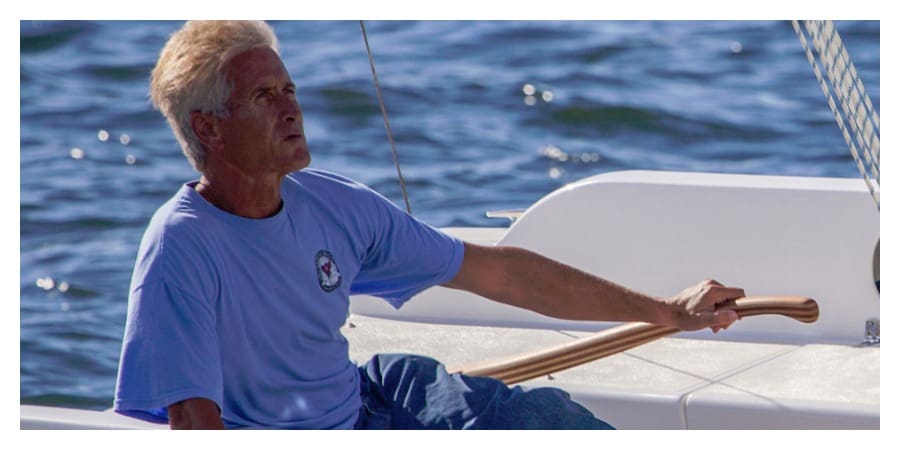Sailing market has changed over the last years: to understand how we interviewed Glenn Walters, Managing Partner at Bluenose Yacht Sales & Brokerage. As marketing professional, Glenn worked for some of the highest quality yacht builders in the USA, such as Morris Yacht and he visited many other production yards such as Jeanneau, CNB, Lagoon, C&C, CNB, Tartan… Who better than Glenn Walters?
After difficult years, the sailboats market is showing signs of growth; do you agree?
The years subsequent to 2009 have been challenging worldwide for the sailboat market. However, there is a perception in the market that is also distorted. For instance, in the USA the new boat sales last year for the major producers have reached levels of 2008 which was a good year. This achievement was primarily accomplished by the major brands such as Jeanneau, Beneteau, Hanse, and Bavaria due to their increased market share against most of the other brands. Hence, the lesser brands are still suffering.
By way of example, our dealership in the past five years has achieved double-digit growth and we expect that will continue in 2016. On the other hand, there are regions such as Europe that continue to languish. More recently, the offshore builders have stepped up their marketing and sales efforts in the USA due to our more positive demand and more recently due to the strength of the USD. This currency situation enhances the prospects for growth in the USA due to price adjustments that favor the buying public here.
Hence, the growth over the past five years has been fragmented on a geographic basis and on a brand basis; growth for some brands and some regions have been very good, while others are weak. I expect that will continue.
What has changed compared to the past?
The biggest change in the market is the dominant brands have increased their market share at the expense of the less efficient smaller brands. Additionally, the larger brands have been very proactive in the introduction of new models giving the buyers exciting improvements while the smaller brands cannot afford such new model introductions and the related tooling costs. This is both a negative feedback loop for the smaller brands and a positive feedback loop for the dominant brands that amplifies the market share paradigm changes. Other changes in technology and design have made all of the new designs faster, easier to sail and easier to maintain.
What kind of boats are most in demand now?
Power Yachts in the USA have shown huge growth in the past five years in the USA. Both Jeanneau and Beneteau have dozens of new models and product ranges that are extremely value positioned. Some of these new models are in excess of 70 feet and selling very well. As for sailboats, the sweet spot continues to be in the 40-45 foot range due to demographics, value, ease of use, and larger interior volumes due to design changes such as hard chines.
How important is the “wife” in the choice of the boat?
Very funny and insightful question. The wife often is THE most important decision-maker today versus ten years ago. The yacht designers keenly recognized this over the past ten years and have incorporated changes, features and benefits that are particularly aimed at that target market. I have had several sales in the past few years where the “wife” is not only the decision-maker but often the most skilled sailor. Very refreshing and nice to see. This is also one reason why I am continuously looking for female sales brokers/salespersons. We need more of them and there is a big opportunity in this regard. Ask them to call me!
What is the ideal boat for Glenn Walters?
I am asked that question very often and it usually takes a long response. First and foremost, every boat is a result of many compromises. One’s intended use is a key question that I ask of clients to gain insight into what is their ideal boat today. Performance, size, comfort, ease of use, sea-kindliness, budget, aesthetics, ocean versus coastal cruising, etc all are factors for anyone’s ideal boat. However, my favorite boat has been an ABLE 50, often called an APOGEE 50. No longer built, but to me a wonderful blend of excellence, but especially suited for my particular desired use.
The growth over the past five years has been fragmented on a geographic basis and on a brand basis; growth for some brands and some regions have been very good, while others are weak. I expect that will continue
Glenn Walters, how do you think will change in the future the world of sailing?
Well, the primary trends will continue and the number one on-going change is ease of use for two people. There is a long list of many things that have changed to make a 50 footer today easier to handle by two people. As a result, I have many couples purchasing large boats where it is primarily the two of them often sailing around the world. The recent introduction of new technology pioneered by Harken and Jeanneau for a computer to self sail the boat by controlling the winches, sail angle, heel angle is but another new example of change.
And of course the other BIG change of the future is foiling and rigid wing sails. As for pricing, I do not expect any major changes there. The cost today of a 40 foot, well equipped yacht, is lower than it has ever been due to design optimization, production efficiencies and economies of scale. Those improvements over the past ten years has been very significant and we are now reaching a zone of diminishing returns where future efficiencies are incrementally small by comparison to the past.
